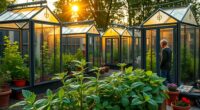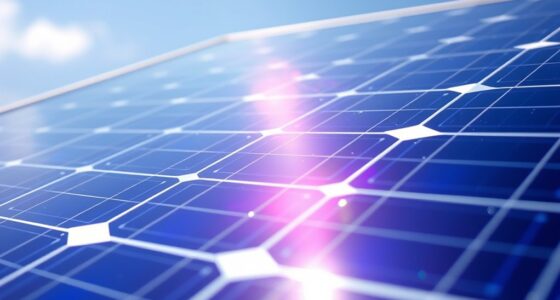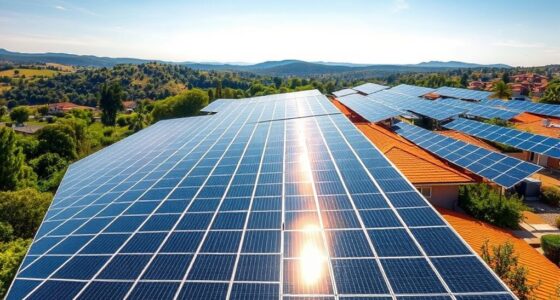Wind energy harnesses the wind’s kinetic energy to create clean, renewable electricity, making it an essential part of sustainable living. By reducing carbon emissions and conserving water, it helps mitigate climate change and lowers harmful pollutants. Modern wind turbines can power thousands of homes while creating jobs in manufacturing and installation. As technology advances, the efficiency of wind energy continues to improve. Discover how wind energy can shape a greener future for us all.
Key Takeaways
- Wind energy generates electricity by converting the kinetic energy of wind through modern, efficient wind turbines, promoting sustainable living.
- It significantly reduces carbon emissions, helping combat climate change and protect the environment.
- The wind industry supports hundreds of thousands of jobs, contributing to economic stability and growth while promoting renewable energy.
- Technological advancements in turbine design enhance performance and efficiency, making wind energy more viable and cost-effective.
- Integrating wind energy into power grids boosts energy security and reduces reliance on fossil fuels for a sustainable future.
The Basics of Wind Energy
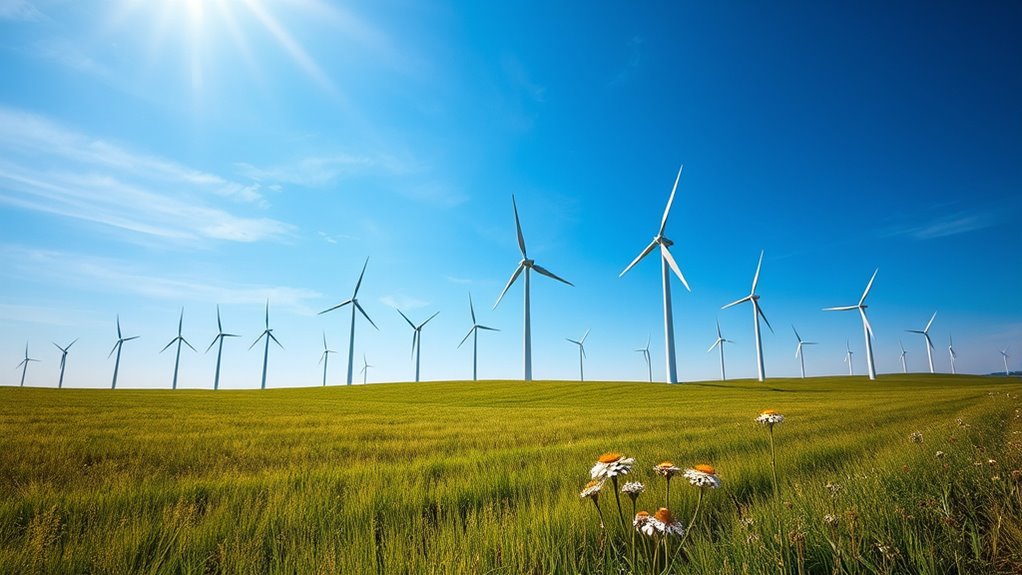
Wind energy is a powerful and renewable resource that captures the kinetic energy of the wind to generate electricity.
You’ll find that wind turbines play a key role in this process, converting wind’s kinetic energy into electrical energy through aerodynamic forces. When wind blows across the turbine blades, they spin, activating a generator that produces electricity. This process contributes to a significant reduction in greenhouse gases compared to traditional energy sources. Additionally, diversifying energy sources can further enhance energy security and sustainability. Modern wind turbines can power hundreds to thousands of homes, showcasing their scalability and effectiveness.
Wind energy fits into a larger category of renewable sources, including solar and hydro power. Turbines can be installed on land or offshore, depending on the wind conditions. In fact, the U.S. wind industry supports over 300,000 American jobs across all 50 states, highlighting its significant economic impact.
The main components of a turbine include the rotor, nacelle, and tower, all working together to harness this clean energy. Understanding these basics helps you appreciate the potential of wind energy for sustainable living.
Advantages of Wind Power
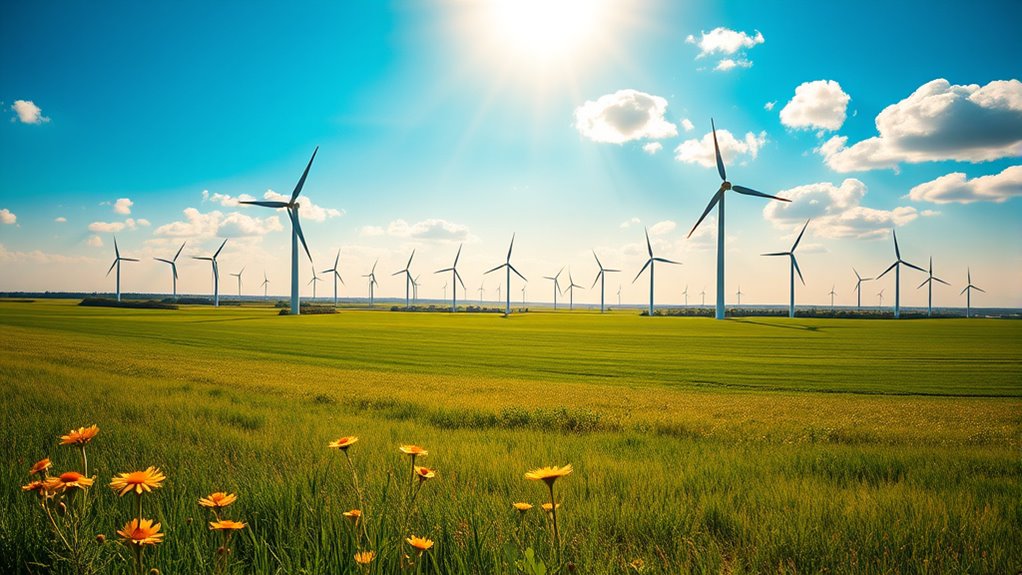
As you explore the advantages of wind power, you’ll discover its significant contributions to environmental sustainability and economic growth.
Wind energy helps reduce carbon emissions by avoiding 348 million metric tons of CO2 each year, minimizing pollutants that contribute to climate change. It conserves water, saving billions of gallons annually, and reduces smog and acid rain by lowering harmful emissions. Additionally, technological advancements enhance the efficiency of wind turbines, further supporting the transition to renewable energy. Moreover, the weight of wind turbine blades has decreased due to advanced materials, making them more efficient and easier to transport. Solar charge controllers play a crucial role in optimizing energy harvest from various renewable sources, just as wind energy promotes environmental well-being.
Economically, the wind sector creates thousands of jobs in manufacturing and installation, while stabilizing electricity costs and providing revenue to communities. Plus, technological advancements make wind energy increasingly cost-competitive with fossil fuels.
The Global Impact of Wind Energy
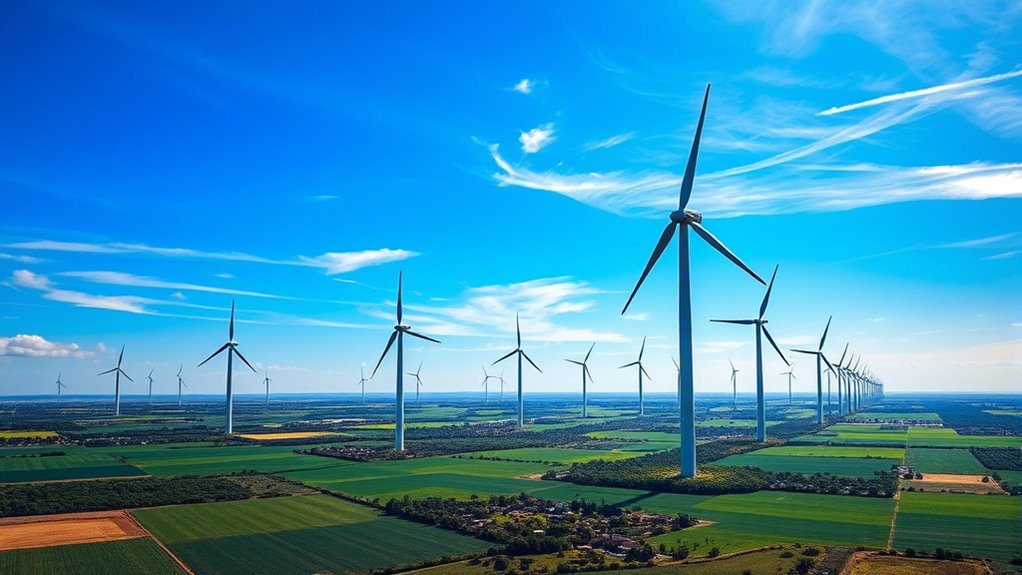
While the world grapples with the pressing challenges of climate change and energy security, the expansion of wind energy offers a promising solution.
In 2023, the global wind industry installed a record 116 to 117 gigawatts, pushing total capacity beyond one terawatt. This growth, driven primarily by China’s 75-gigawatt addition, shows wind energy now generates about 10% of the world’s electricity. Wind power capacity exceeded 1,047 Gigawatt in 2023, highlighting the increasing reliance on renewable energy sources. AI Ethicist Jobs are also emerging as essential in ensuring that the transition to renewable energy technologies is approached with careful consideration of ethical implications. Additionally, the diversification strategy of incorporating various renewable sources can further enhance energy stability and sustainability. Renewable energy heat pumps can also complement wind energy by providing efficient home heating solutions, further reducing fossil fuel dependence.
As costs drop, wind power becomes a competitive option, attracting investment and creating green jobs. This shift not only supports local economies but also plays an essential role in mitigating climate change.
Technological Advancements in Wind Turbines
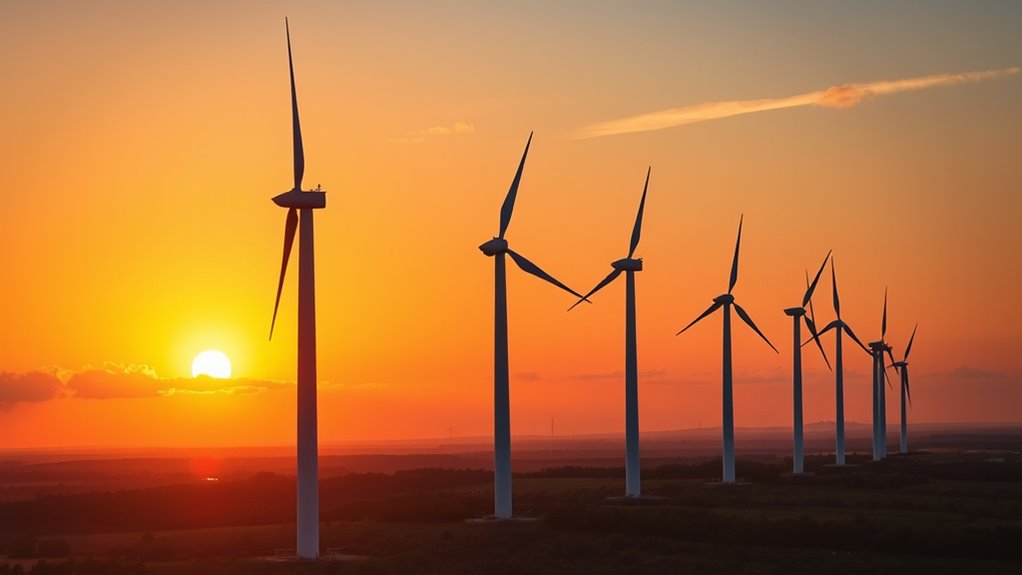
The remarkable growth of wind energy has been fueled not just by increased installations but also by considerable technological advancements in wind turbines.
You’ll notice that turbine capacities have surged, reaching an impressive 3.2 MW in the US by 2022. Lightweight materials like carbon fiber enhance performance, while taller towers boost efficiency, allowing for fewer turbines. Taller towers exceeding 100 metres are becoming more common in the US, contributing to improved capacity and power output per turbine. Additionally, healthy ecosystems benefit from renewable energy sources like wind, as they reduce reliance on fossil fuels and lower greenhouse gas emissions. The integration of advanced technology in wind turbines makes them more efficient and reliable for sustainable energy production. Proper sizing of heat pumps is also essential in optimizing energy efficiency in renewable systems.
Advanced controls and optimized blade positioning maximize energy capture, notably increasing annual production. Innovations such as direct drive systems and permanent magnet generators simplify design and enhance reliability.
Predictive maintenance and AI-driven systems further improve operational efficiency, ensuring turbines run smoothly.
These advancements collectively create a more effective and sustainable wind energy solution, paving the way for a cleaner future.
The Future of Wind Energy and Sustainability
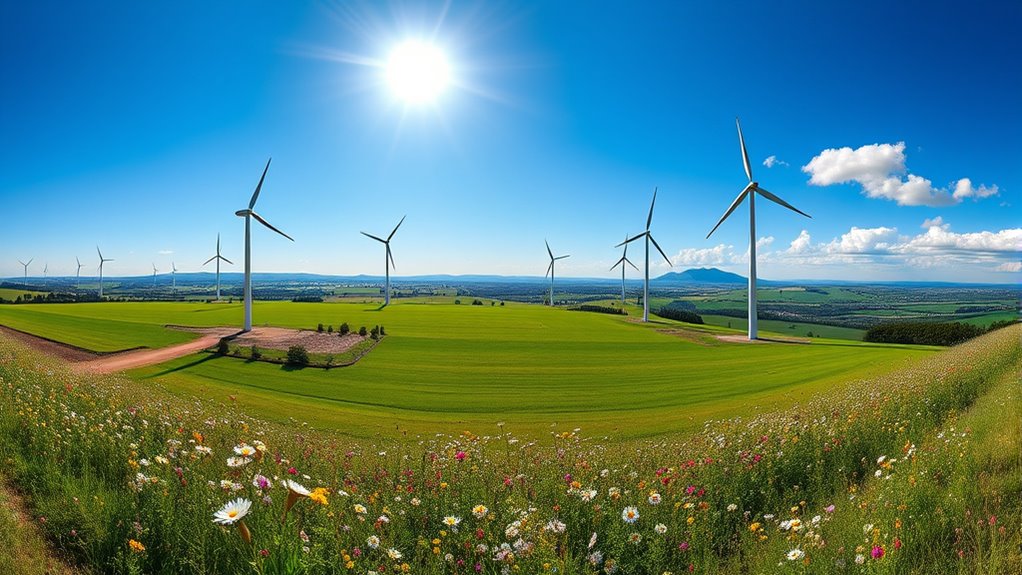
Wind energy is poised to play a pivotal role in shaping a sustainable future, especially as the world grapples with climate change and the need for clean energy solutions. By greatly reducing greenhouse gas emissions, wind power is essential for achieving renewable energy goals. It not only creates jobs but also supports sustainable infrastructure, fueling economic recovery. The wind industry is projected to generate millions of jobs globally over the next few years, further highlighting its importance in driving economic growth. As you embrace wind energy, you’ll enhance energy security, reducing reliance on fossil fuels. With supportive policies and global investments surging, wind energy’s scalability makes it a viable option for both small and large projects. Furthermore, the integration of best lifestyle products can complement wind energy initiatives by promoting efficiency and sustainability in everyday living. Additionally, innovative recycling initiatives aim to minimize waste, ensuring a greener future as you contribute to the shift towards a more sustainable energy landscape. Moreover, adopting healthier dessert alternatives like frozen yogurt can further support a lifestyle that values sustainability and wellness. The smart shopping approach can help consumers make informed choices, ultimately benefiting both their wallets and the environment.
Frequently Asked Questions
How Do Wind Turbines Affect Local Wildlife?
Wind turbines can considerably impact local wildlife.
You might notice that birds and bats sometimes collide with turbine blades, especially during migration. Turbines can also disrupt habitats, affecting animal behavior and migration routes.
The noise from turbines may disturb wildlife communication and breeding patterns.
While wind energy helps reduce greenhouse gas emissions, you should consider the potential ecological changes and the importance of careful site selection to minimize these negative effects on local ecosystems.
What Is the Lifespan of a Wind Turbine?
When you consider the durability of wind turbines, it’s fascinating how their lifespan ranges from 20 to 30 years, yet varies dramatically based on maintenance and location.
You’ll find that proper upkeep can extend their service, while harsh environments wear them down faster.
Regular checks are essential, and sometimes, components need replacing before the turbines reach their full potential.
Ultimately, proactive upgrades can breathe new life into these energy giants.
Can Wind Energy Be Used in Urban Areas?
Yes, you can use wind energy in urban areas! Urban wind turbines, designed for smaller spaces, can harness local wind efficiently.
Despite challenges like turbulence and lower energy yield, these turbines can still reduce CO2 emissions and provide clean energy.
By optimizing rotor design and installing turbines at ideal heights, you’ll enhance energy production.
Engaging with your community and considering aesthetics will help make urban wind energy a viable option for your neighborhood.
How Is Wind Energy Stored for Later Use?
You can store wind energy using various methods.
Battery storage is popular for its efficiency and quick response.
Compressed air energy storage compresses air for later use, while pumped hydro storage moves water between reservoirs.
Flywheel energy storage captures kinetic energy, and hydrogen fuel cells convert excess wind energy into hydrogen for fuel.
Each method has its own benefits and challenges, ensuring you have options for utilizing wind energy when you need it.
What Are the Initial Costs of Installing Wind Turbines?
When you consider installing wind turbines, initial costs can range considerably.
You’ll need to budget for purchasing the turbine, which typically costs between $1.3 million and $2.2 million.
Additionally, site preparation and grid connection can add another $350,000 to $900,000.
Don’t forget about transportation, installation, and permitting fees, which can total anywhere from $500,000 to over $1 million.
It’s essential to assess these costs before committing to your project.
Conclusion
As the wind whispers through the blades of a turbine, it carries the promise of a sustainable future. By embracing wind energy, you’re not just harnessing power; you’re planting the seeds of change for generations to come. Each gust becomes a symbol of hope, driving innovation and resilience. So, let’s ride the winds of progress together, transforming our lives and our planet, one breeze at a time. The future is here—let it soar with you.

